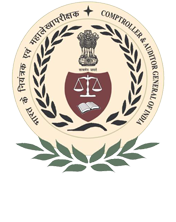Audit Reports

Gujarat
Report of 2011 - Compliance and Financial Audit on State Finance of Government of Gujarat
Overview
In response to the Twelfth Finance Commission's recommendations, the Gujarat Government enacted its Fiscal Responsibilities and Budget Management (FRBM) Act, entitled the Gujarat Fiscal Responsibility Act, 2005 with a view to ensure prudence in fiscal management and fiscal stability by progressive elimination of revenue deficit, sustainable debt management consistent with fiscal stability, greater transparency in fiscal operations of the Government and conduct of fiscal policy in a medium term fiscal framework. The State Government's commitment to carry forward these reforms is largely reflected in the policy initiatives announced in its subsequent budgets. Though the fiscal management targets on revenue deficit and fiscal deficit of FRBM legislation have been achieved by 2006-07, in the subsequent years such deficits increased substantially.
To maintain a stable and sustainable fiscal environment consistent with equitable growth, the 13th Finance Commission (ThFC) has recommended a fiscal consolidation roadmap for the State by amending their Fiscal Responsibility Legislations. This requires the State to reduce the revenue deficit to zero by 2011-12, the fiscal deficit to not more than three per cent of the estimated GSDP for the year beginning 2011-12, to cap the total public debt of the State Government to 27.1 per cent of the estimated GSDP by end of 2014-15 and to cap the outstanding guarantees within the limit (Rs. 20,000 crore) prescribed in the Gujarat State Guarantees Act, 1963.
The State Government has done well in establishing an institutional mechanism on fiscal transparency and accountability as evident from the year- on-year presentation of outcome budgets. These outcome indicators do not, however, give the big picture of the status of financial management including debt position, off-budget liabilities, cash management etc. for the benefit of the State Legislature and the other stakeholders. Thus the outcome indicators serve a limited purpose of measuring the department-wise performances against the targets.

